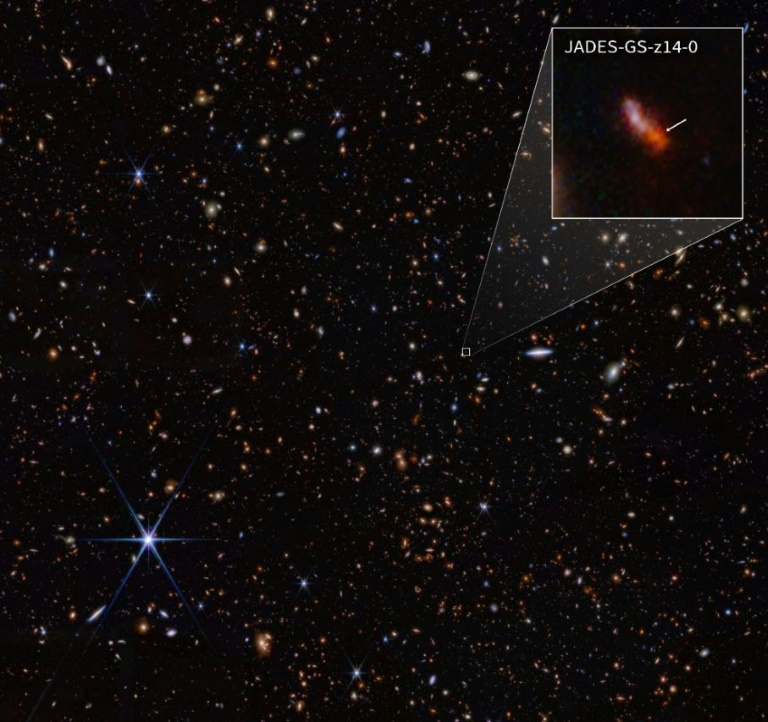Science
New Physics Model Challenges Big Bang Theory with Gravitational Waves

A new physics model introduced by researchers from Spain and Italy challenges the long-standing Big Bang theory, proposing that gravitational waves may have played a pivotal role in the formation of the universe. This radical theory, published in the scientific journal Physical Review Research in July 2025, offers a fresh perspective on the universe’s origins and its subsequent evolution.
The traditional Big Bang theory posits that the universe began as a singular point, which then expanded and continues to stretch. This widely accepted explanation has been foundational to modern cosmology. However, the new model suggests that tiny ripples in space-time, known as gravitational waves—first predicted by Albert Einstein in 1915—could be responsible for the creation of cosmic matter, including galaxies, stars, and planets.
Questioning Established Theories
The research team, led by renowned physicist Dr. Raúl Jiménez, aims to simplify the understanding of the universe’s early moments. In their study, titled “Inflation without an inflaton,” they explore alternatives to the inflation theory, which currently holds that the universe underwent a rapid expansion in its first moments. This inflation model requires multiple specific conditions to align, making it a complex explanation that remains a topic of debate among scientists.
Dr. Jiménez emphasized the significance of their findings. “For decades, we tried to understand the early moments of the universe using models based on elements we have never observed,” he stated. He further explained that their new proposal is “exciting” due to its simplicity and verifiability, relying on established principles of gravity and quantum mechanics without introducing speculative factors.
Investigating Cosmic Origins
To validate their model, the researchers conducted a series of computer simulations aimed at testing alternatives to inflation theory. According to information from SciTechDaily, the findings have the potential to reshape our understanding of the universe’s infancy and how those critical moments influenced its development.
Data that could support or contradict this new model includes measurements from the cosmic microwave background (CMB), which is a field of radiation left over from the early universe. Observations of the universe’s large-scale structure and measurements of primordial gravitational waves are also crucial to determining the validity of this groundbreaking theory.
Historically, gravitational waves have been a topic of interest since their initial proposal by Oliver Heaviside in 1893 and later by Henri Poincaré in 1905. They gained significant attention following Einstein’s formulation of them as ripples in the space-time continuum in his general theory of relativity in 1916. The implications of this new model could lead to profound changes in our understanding of the cosmos and how it came into existence.
As the scientific community continues to explore the early universe, this new model offers a compelling alternative to traditional views and invites further investigation into the fundamental nature of reality.
-

 Politics4 weeks ago
Politics4 weeks agoSecwepemc First Nation Seeks Aboriginal Title Over Kamloops Area
-

 World5 months ago
World5 months agoScientists Unearth Ancient Antarctic Ice to Unlock Climate Secrets
-

 Entertainment5 months ago
Entertainment5 months agoTrump and McCormick to Announce $70 Billion Energy Investments
-

 Science5 months ago
Science5 months agoFour Astronauts Return to Earth After International Space Station Mission
-

 Lifestyle5 months ago
Lifestyle5 months agoTransLink Launches Food Truck Program to Boost Revenue in Vancouver
-

 Technology3 months ago
Technology3 months agoApple Notes Enhances Functionality with Markdown Support in macOS 26
-

 Lifestyle3 months ago
Lifestyle3 months agoManitoba’s Burger Champion Shines Again Amid Dining Innovations
-

 Top Stories2 months ago
Top Stories2 months agoUrgent Update: Fatal Crash on Highway 99 Claims Life of Pitt Meadows Man
-

 Politics4 months ago
Politics4 months agoUkrainian Tennis Star Elina Svitolina Faces Death Threats Online
-

 Sports5 months ago
Sports5 months agoSearch Underway for Missing Hunter Amid Hokkaido Bear Emergency
-

 Politics5 months ago
Politics5 months agoCarney Engages First Nations Leaders at Development Law Summit
-

 Technology5 months ago
Technology5 months agoFrosthaven Launches Early Access on July 31, 2025





















